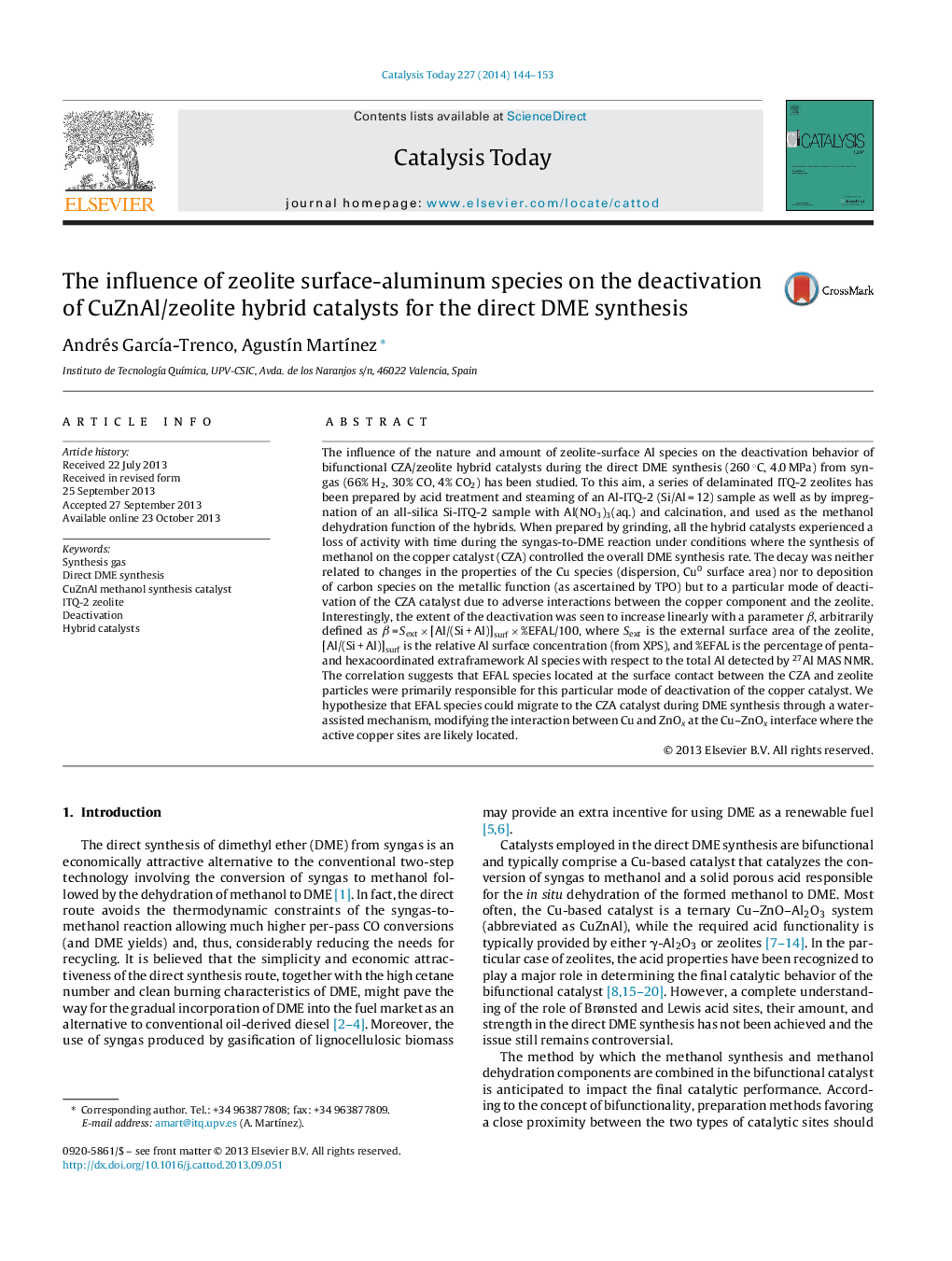| کد مقاله | کد نشریه | سال انتشار | مقاله انگلیسی | نسخه تمام متن |
|---|---|---|---|---|
| 54170 | 46999 | 2014 | 10 صفحه PDF | دانلود رایگان |

• ITQ-2 zeolite with different types and amounts of EFAL species prepared.
• CZA/ITQ-2 hybrids obtained by grinding deactivated during direct DME synthesis.
• Extent of deactivation linked to the amount of EFAL at the CZA-zeolite interface.
• Water-assisted migration of EFAL to CZA suggested as responsible for deactivation.
The influence of the nature and amount of zeolite-surface Al species on the deactivation behavior of bifunctional CZA/zeolite hybrid catalysts during the direct DME synthesis (260 °C, 4.0 MPa) from syngas (66% H2, 30% CO, 4% CO2) has been studied. To this aim, a series of delaminated ITQ-2 zeolites has been prepared by acid treatment and steaming of an Al-ITQ-2 (Si/Al = 12) sample as well as by impregnation of an all-silica Si-ITQ-2 sample with Al(NO3)3(aq.) and calcination, and used as the methanol dehydration function of the hybrids. When prepared by grinding, all the hybrid catalysts experienced a loss of activity with time during the syngas-to-DME reaction under conditions where the synthesis of methanol on the copper catalyst (CZA) controlled the overall DME synthesis rate. The decay was neither related to changes in the properties of the Cu species (dispersion, Cu0 surface area) nor to deposition of carbon species on the metallic function (as ascertained by TPO) but to a particular mode of deactivation of the CZA catalyst due to adverse interactions between the copper component and the zeolite. Interestingly, the extent of the deactivation was seen to increase linearly with a parameter β, arbitrarily defined as β = Sext × [Al/(Si + Al)]surf × %EFAL/100, where Sext is the external surface area of the zeolite, [Al/(Si + Al)]surf is the relative Al surface concentration (from XPS), and %EFAL is the percentage of penta- and hexacoordinated extraframework Al species with respect to the total Al detected by 27Al MAS NMR. The correlation suggests that EFAL species located at the surface contact between the CZA and zeolite particles were primarily responsible for this particular mode of deactivation of the copper catalyst. We hypothesize that EFAL species could migrate to the CZA catalyst during DME synthesis through a water-assisted mechanism, modifying the interaction between Cu and ZnOx at the Cu–ZnOx interface where the active copper sites are likely located.
Figure optionsDownload high-quality image (140 K)Download as PowerPoint slide
Journal: Catalysis Today - Volume 227, 15 May 2014, Pages 144–153